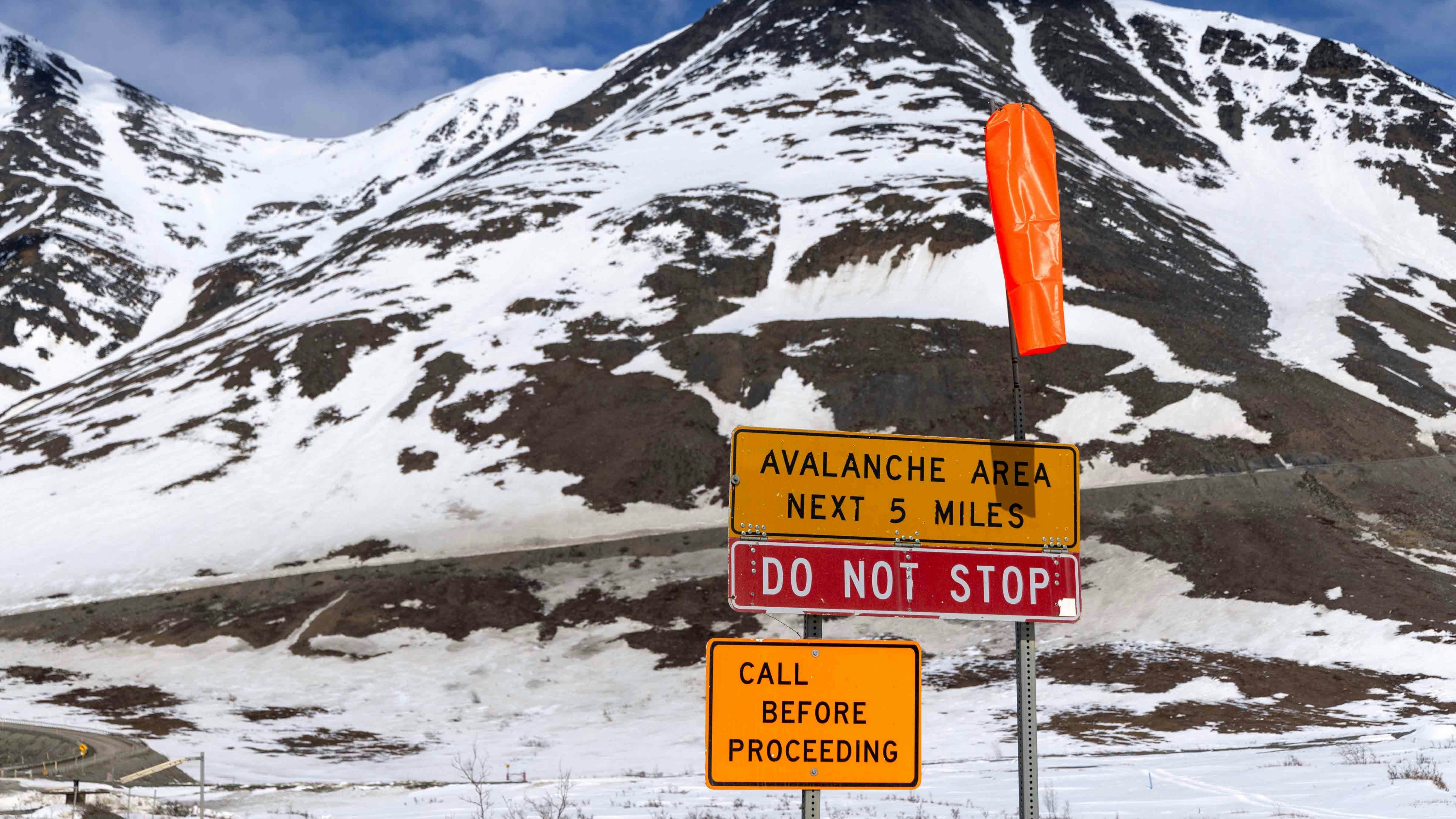DUBOIS — Every firefighter on the complex site management team that’s fighting the Fish Creek Fire carries a 5-pound reminder on their back of just how dangerous the job they’re doing really is.
That reminder is called a fire shelter.
Typically, fire shelters are made of multiple layers of aluminum foil and woven silica or fiberglass. Their purpose is to reflect searing heat away from a firefighter who has become trapped in a wildfire while maintaining at least some breathable air inside the shelter and blocking out toxic gases.
It is a dire safety measure intended only as a last resort.
“Using it means that we failed,” firefighter Andy James told Cowboy State Daily. “We failed to recognize what the fire environment was telling us.”
That kind of failure doesn’t happen often for the 449 firefighters who are part of the elite, complex incident management team that’s helping defend the historic Brooks Lake Lodge and other critical assets in the Dubois area from the Fish Creek Fire, which as burned nearly 20,000 acres of beetle-killed timber in rugged, difficult terrain.
The processes and the training these men get is all geared toward avoiding the need for a fire shelter in the first place.
“If you interviewed 100 firefighters, maybe one of them has had to deploy a fire shelter,” James said. “I know that I have my fire shelter in my pack, but that doesn’t change the way I go about looking at the fire, attacking the fire. From an overall safety standpoint, I don’t feel like if things get bad that’s going to save my life.”
Remembering The Big Burn
The fire shelter is not the only heavyweight reminder these firefighters carry.
There’s also a tool called the Pulaski, perfected by a U.S. Forest Service ranger named Ed Pulaski, which combines an axe and an adze in one head.
It’s a versatile tool that can be used equally well for digging the soil or chopping up wood.
But it’s not just another useful tool. Every firefighter on the team has heard the story about Pulaski and the Big Burn of 1910 in Idaho.
Pulaski had been leading a crew of 45 firefighters who became trapped inside what one of the men, named S.W. Stockton, later described as a hurricane of fire.
“One cannot imagine what a roar of wind there was in those small canyons,” Stockton wrote. “The mountainsides were aflame, and trees were falling in all directions about us, faster than one could count.
“The noise of those falling trees only added to the din. It was terrible. In this frightful confusion, we tore along single file with Pulaski at the head. At times, it would seem that the canyon in front of us was blocked with flame.”
Ultimately, Pulaski and his men were blocked from every possible exit. They faced certain death.
But Pulaski was a quick thinker, and he knew the area well. He found an old mine where the firefighters could wait out the ensuing hours of smoke, heat and fumes.
Fumes so bad, all of the men in the mine were ultimately knocked unconscious for a time.
Thanks to Pulaski’s quick thinking, only six of the 45 men died that day.
Three succumbed to fumes inside the mine. Two drowned in water that accumulated near the bodies of their two horses, and one man didn’t make it to the mine.
Pulaski perfected his namesake tool after the Big Burn. Every firefighter who carries one learns the story.
“This is a commitment,” James said. “It’s a lifestyle. When you agree to this profession, whether it’s a firefighter on a hand crew, or, like myself, part of an incident management team, you are committed from the beginning of fire season to the end.”
Fires start up as early as May and run as long as November and December, James said.
The Fish Creek Fire isn’t expected to end until there’s a season-ending event, like snow on the ground.
“You miss holidays, you miss birthdays, you miss spending time with family and loved ones,” James said. “You miss going to football games — all of the things that people take for granted sometimes. We know what we’ve signed up for. It’s our craft, and we love it. We’re dedicated to it, and we’re here to help out.”
Tools Of The Trade
Not everything the firefighters carry has symbolic meaning or a cautionary tale. But they are all just as important.
Their uniform starts with PPE — short for personal protective equipment — or fire retardant clothing. It’s important that any clothing worn underneath their PPE isn’t made of synthetic materials. Those can dramatically worsen the severity of a burn.
Each firefighter carries a gallon of water for personal drinking and food to sustain them for a 16-hour shift, as well as things like a first-aid kit and a flashlight and spare batteries.
“If they’re smart — and most of them are — they’ll have rain gear, they’ll have a coat,” James said.
In addition to the gallon of personal water, the firefighters also have a bladder bag with five gallons of water on their back. The bladder includes a pump that firefighters can use to dole out water to quell a small “hot spot,” referring to places where a firebrand has jumped containment and is threatening to take off in a new area.
Each hotspot requires a lot of work and time to put out, James said. A hot spot is doused with water, or if water is lacking, mixed with enough dirt to cool it off. Then the area is dug out all the way around the hot spot, ensuring it cannot escape. It can take hours to put out a hotspot and may take teams of 10 or more men, depending on its size.
Each firefighter is doing all this labor while carrying gear that can weigh as much as 65 pounds in all, depending on where a firefighter is assigned and what job he’s expected to do.
“All of the firefighters have to pass a physical fitness test,” James said. “They have to carry a 45-pound pack over 3 miles in 45 minutes.”
Water Drops
The firefighters fighting Fish Creek Fire are working with a lot of other firefighting assets. For Fish Creek, those assets include engines full of water and helicopters that can drop 900 gallons of water at once on a hot spot.
It also includes a network of water hoses so that water is never very far away.
So far, the assets haven’t included fixed-wing aircraft with retardants or what is known as slurry. Those are available if needed.
“We haven’t really needed that yet, because the fire hasn’t made a significant run,” James said. “There are a lot of retardant avoidance zones out on this fire that prevent us from using retardant, which impacts water quality and wildlife, and we’re very cognizant of that.”
Fixed-wing aircraft are also much less nimble than helicopters, James added.
“We have helicopters in Jackson and at Blackrock that can lift off and find water within the fire perimeter or right around the edge of the fire perimeter,” he said. “They have really quick turnaround times. Fixed wings have to fly back to a base, the have to land, they have to get loaded with retardant or gel or foam and then fly back.”
To monitor spot fires outside of the containment area, there’s what’s called an “air attack platform.” These are aircraft that are used to monitor the entire area from the sky, looking for any areas where fire has broken out.
That air attack platform is the reason a no-fly zone has been implemented over the area.
Hard Rest For The Weary
Firefighters do tend to develop tunnel vision out in the field, Adams told Cowboy State Daily, and it’s something that’s talked about every day, particularly during the morning briefings. It’s also why firefighters are rotated in and out of service frequently, to ensure everyone on scene is fresh and at peak performance.
“Our standard tour of duty is two weeks,” he said. “And it’s just human nature to get to the point where, after a handful of days, you start to let your guard down. Because of your good work, you’ve got the fire under control in certain situations.”
But it’s not just complacency these men fight in the field. It’s also the living conditions that come with it.
“You’re sleeping in tents, sometimes in subfreezing temperatures,” Adams said. “It just takes a toll on the body and on the mind.”
Wednesday night, temperature in the firefighter camps hit 30 degrees, which is below freezing.
After years of doing this, a firefighter develops their own preferences. James likes to bring a larger tent as well as a collapsible cot, which keeps him up off the ground.
“I have a zero-degree sleeping bag, and a fleece sleeping bag liner,” he said. “I have a good pillow.”
He also has a collapsible chair.
“It’s nice, when you get up in the morning and it’s really cold, to sit in a chair to put your boots on,” he said. “It’s the little things that help to make a fire camp as comfortable as possible.”
Caterers keep all the firefighters well fed throughout the fire camp and there are even showers with hot and cold running water.
But one thing that isn’t allowed for comfort?
There are no campfires, ever, no matter how cold it gets.
“That would kind of defeat the purpose of why we’re here,” James said with a smile. “We’re here to put fire out. So yeah, even though it’s cold — and we do have a really robust supply unit set up. So, if someone needs to, they can check out an extra sleeping bag to stay warm.”
Renée Jean can be reached at renee@cowboystatedaily.com.

















